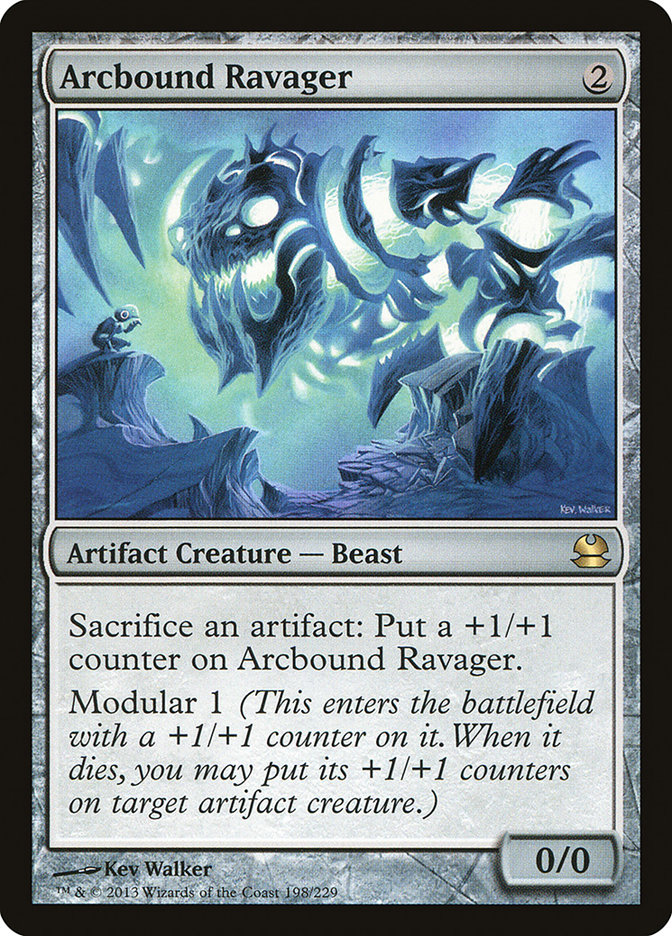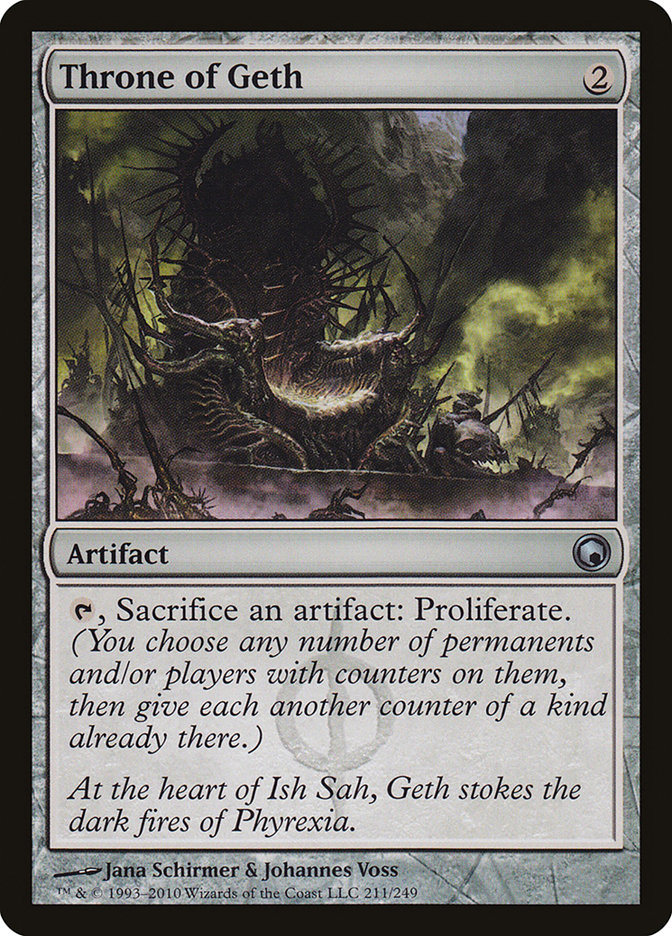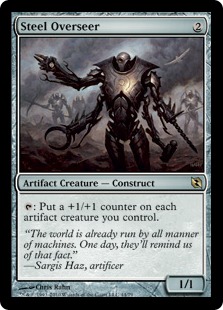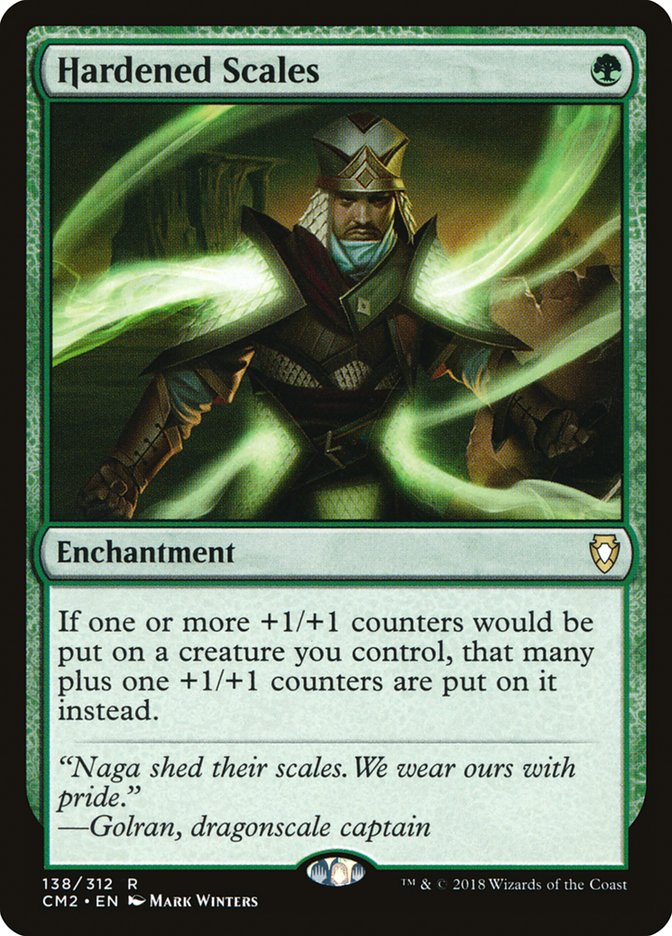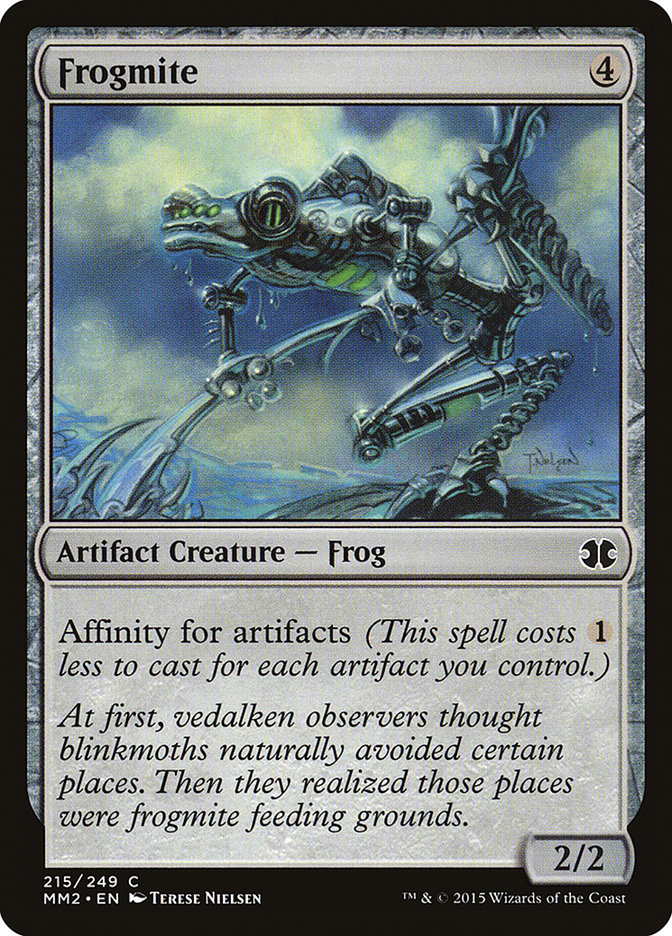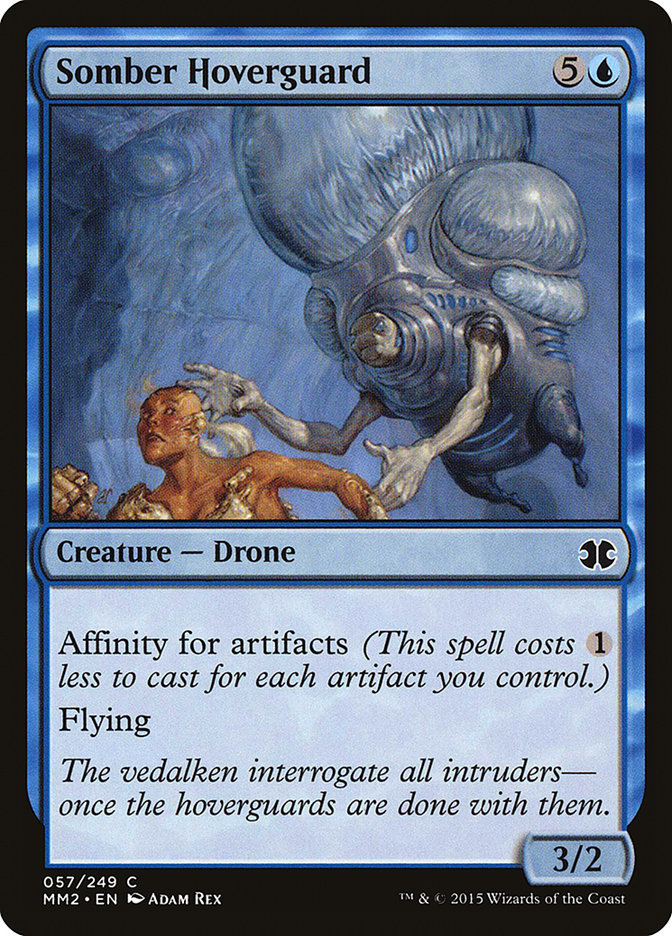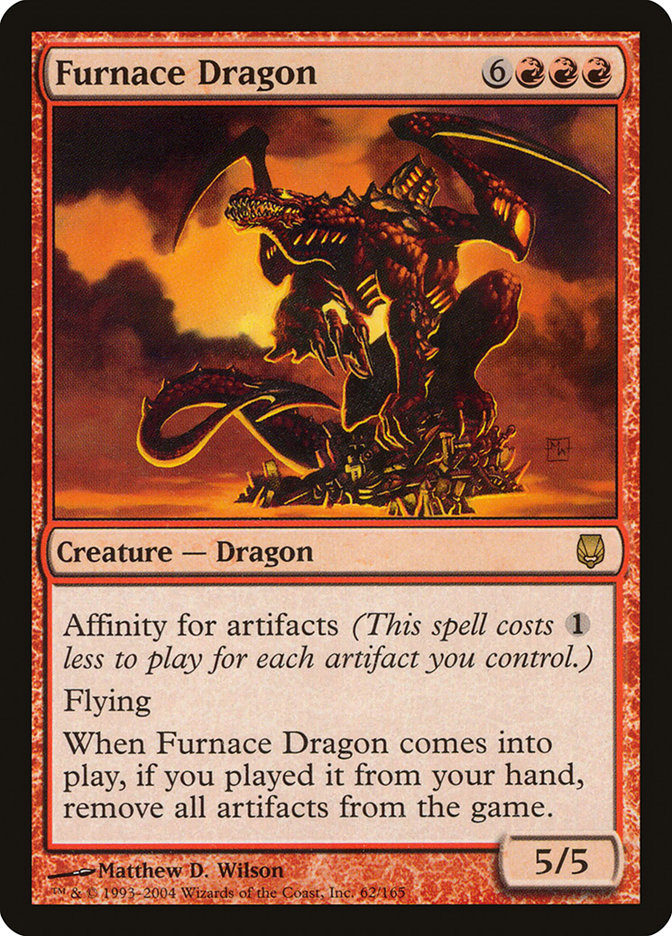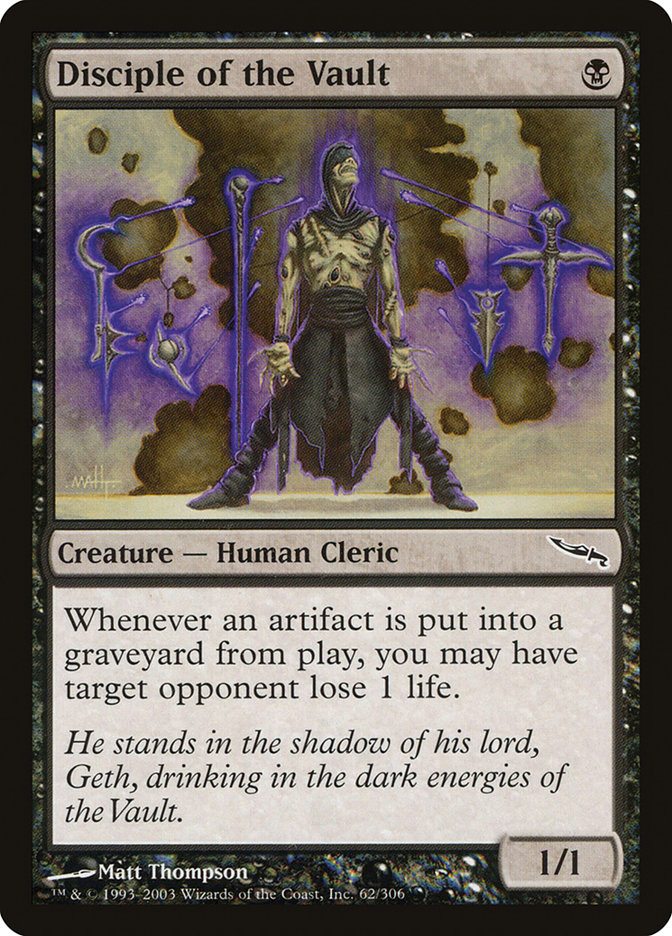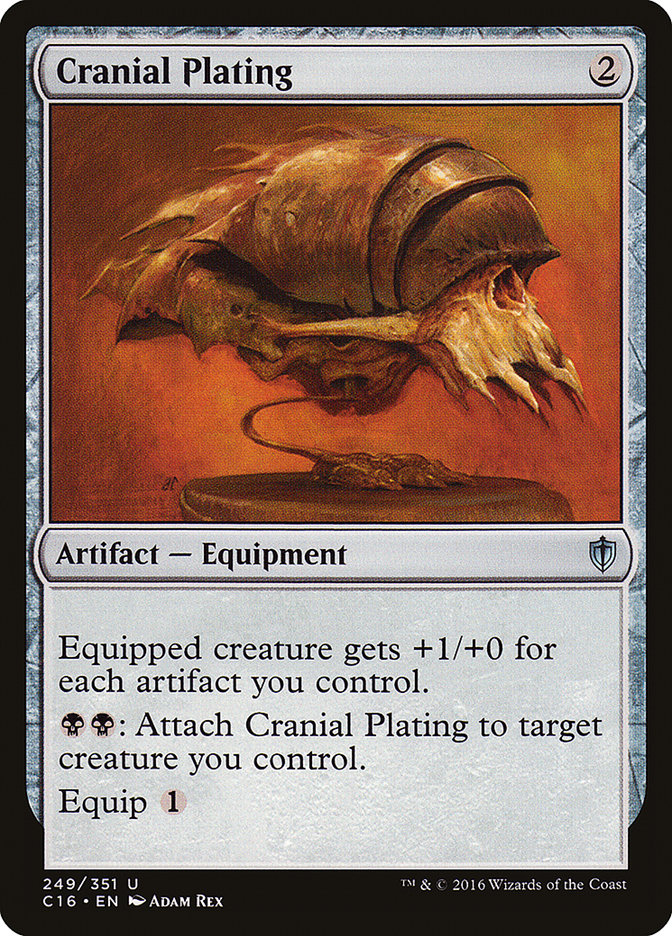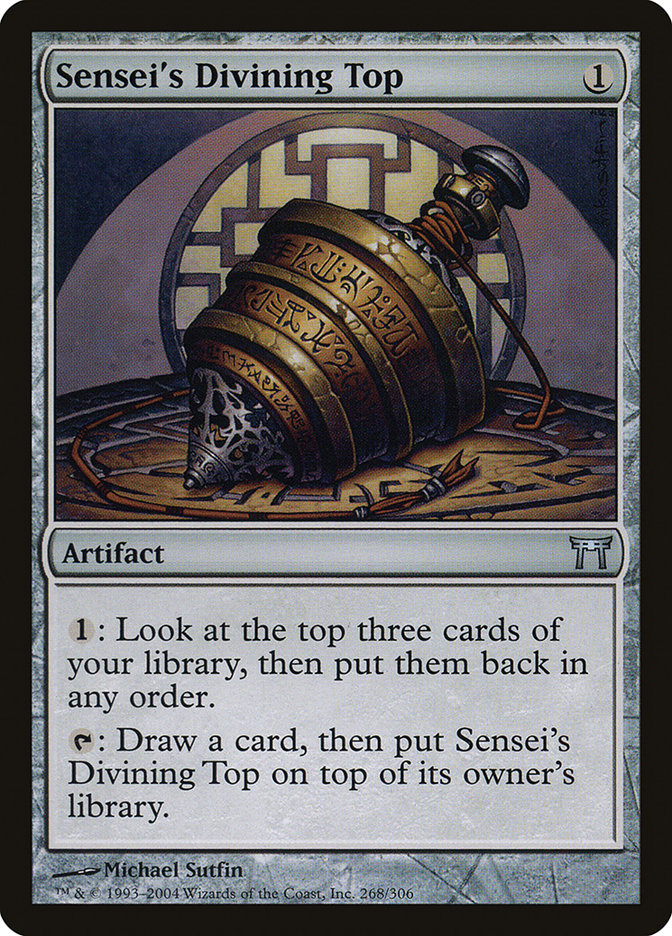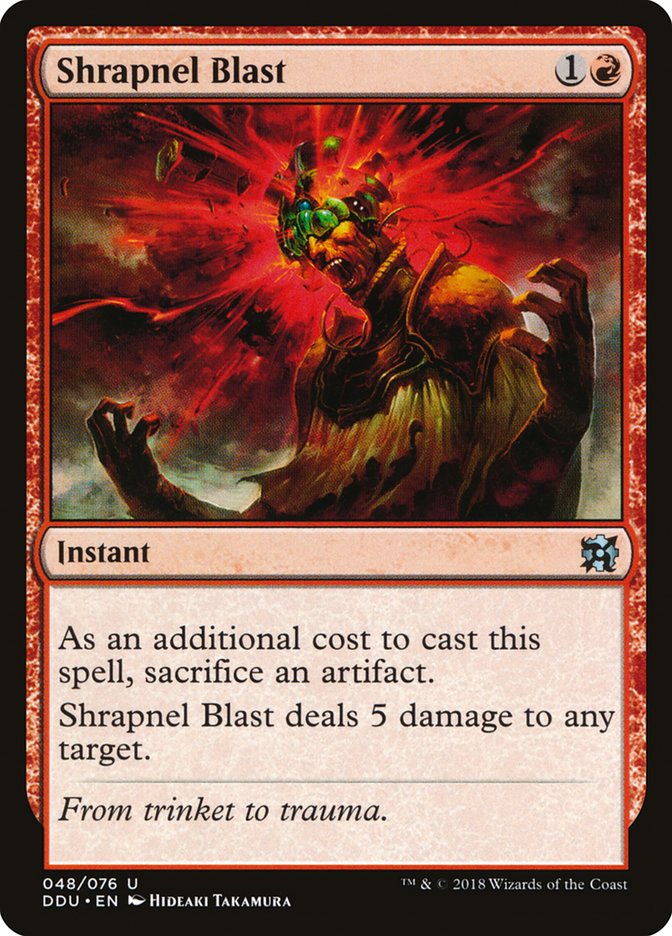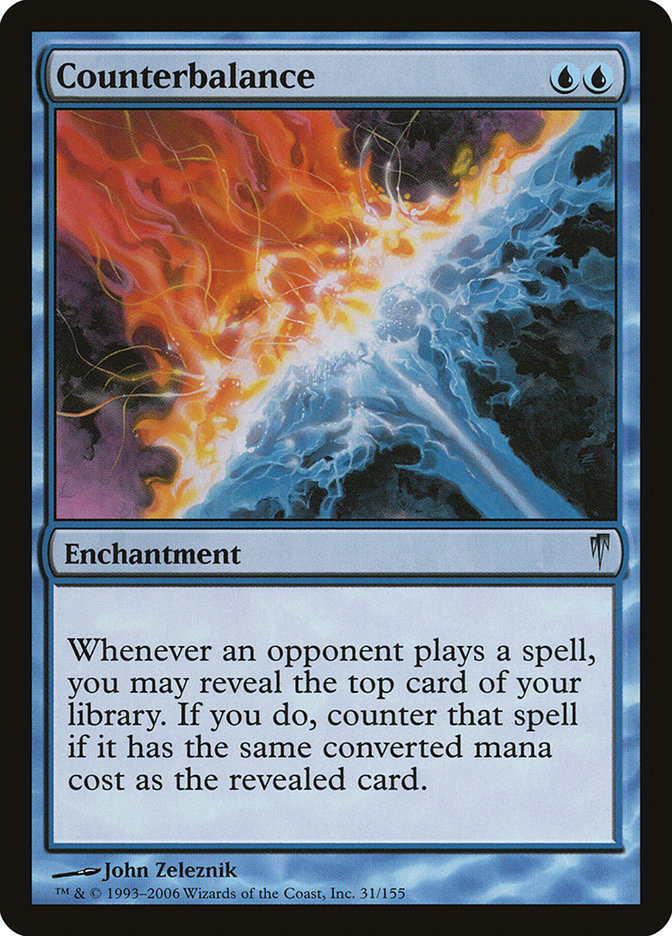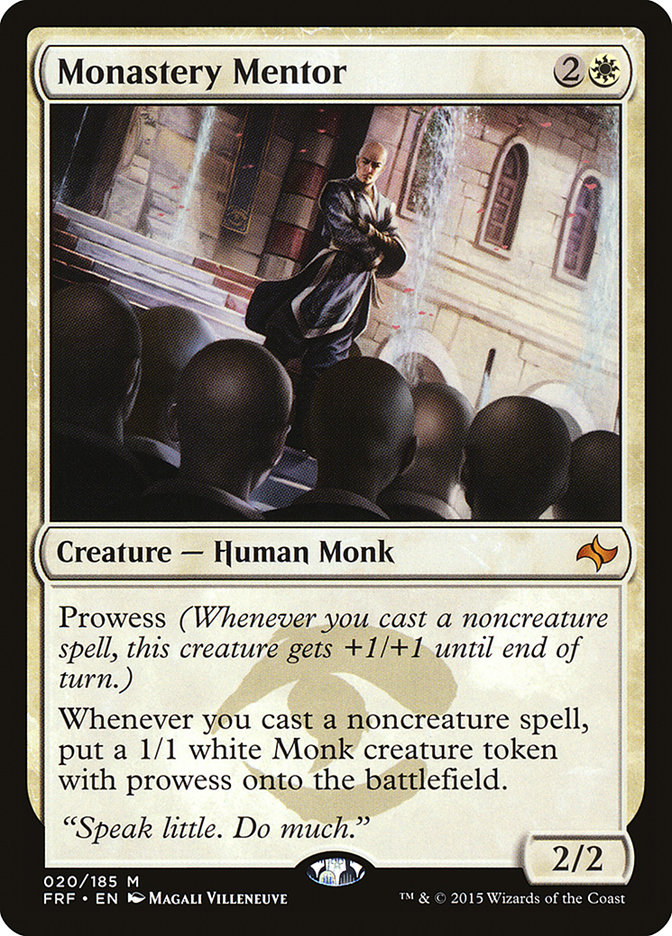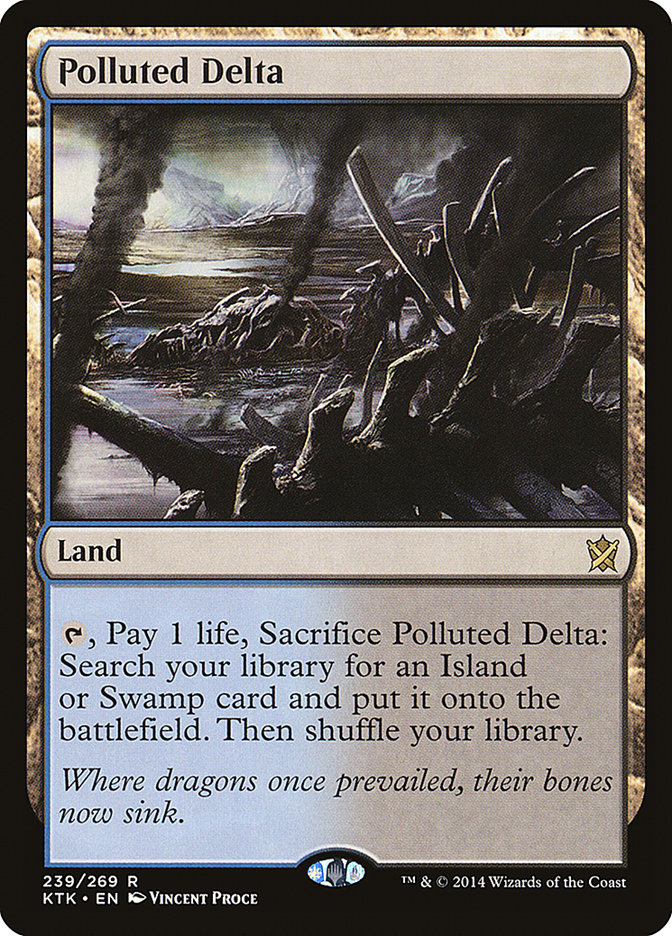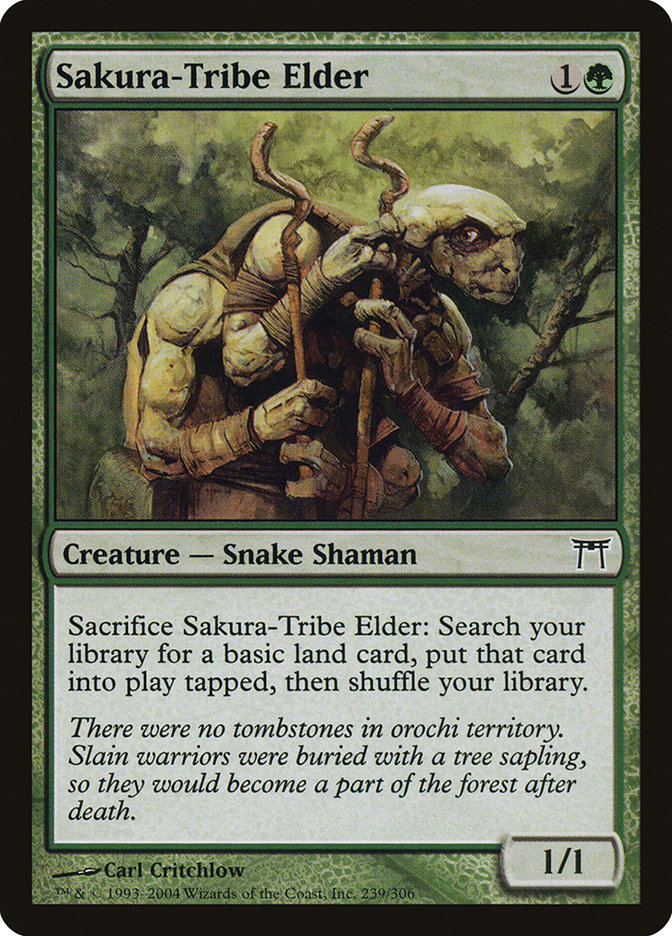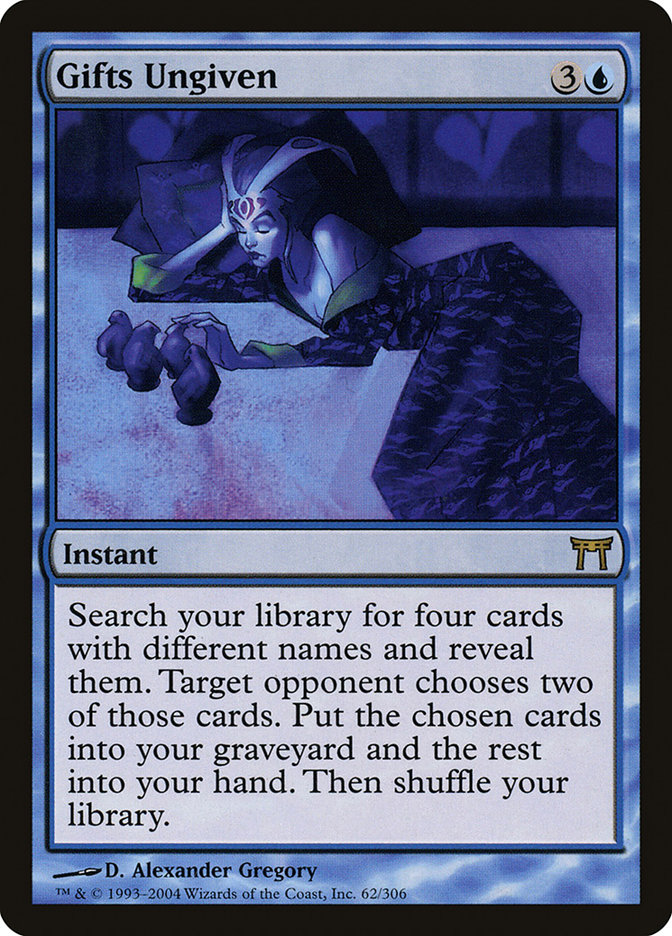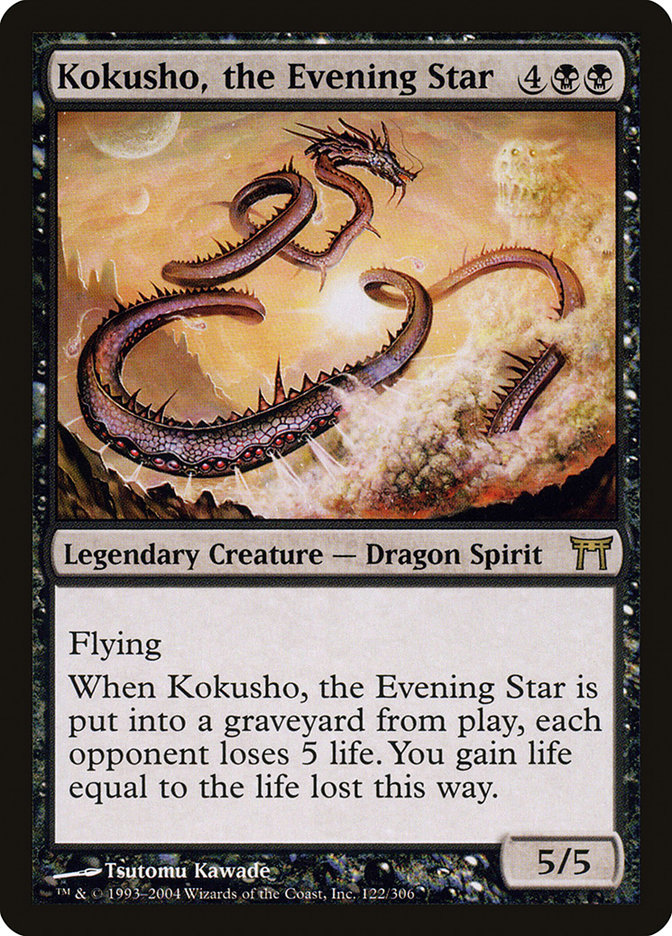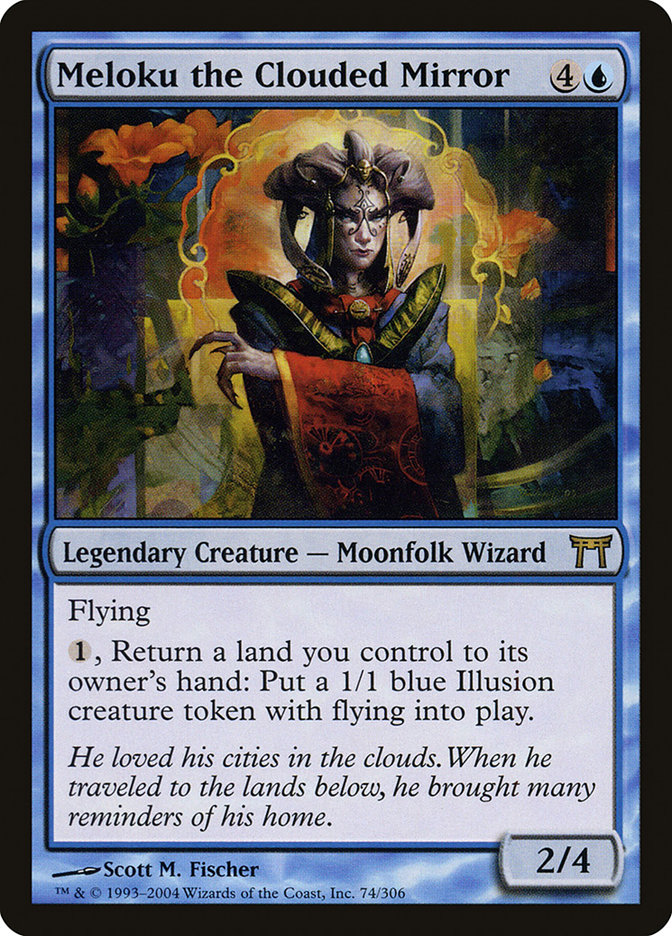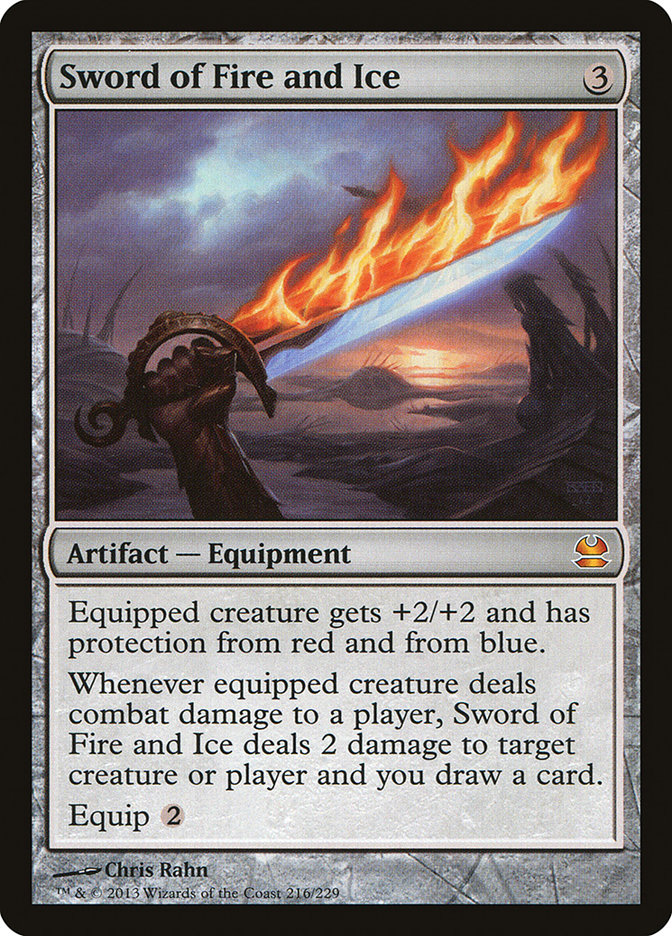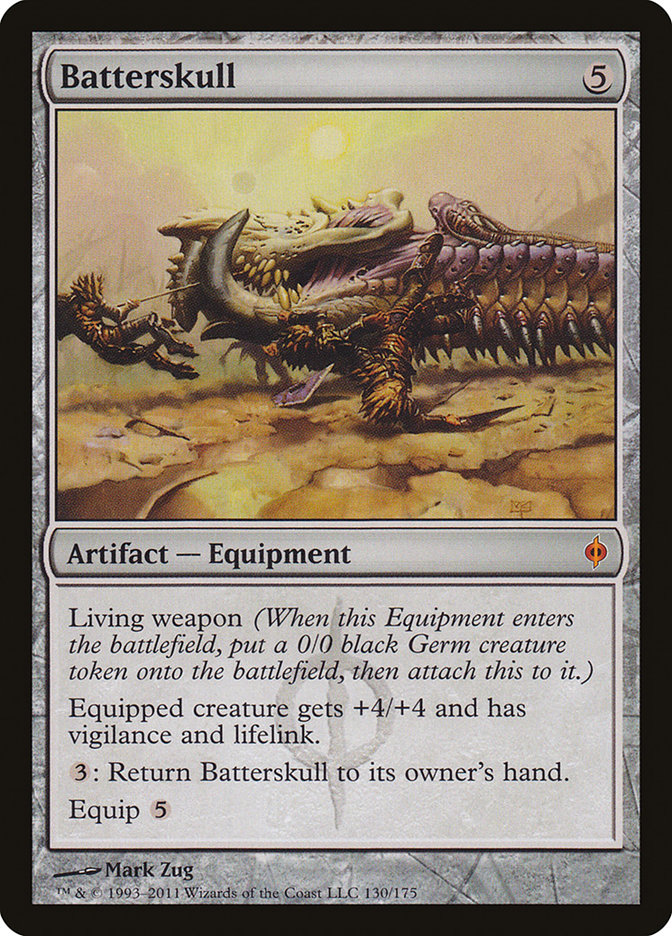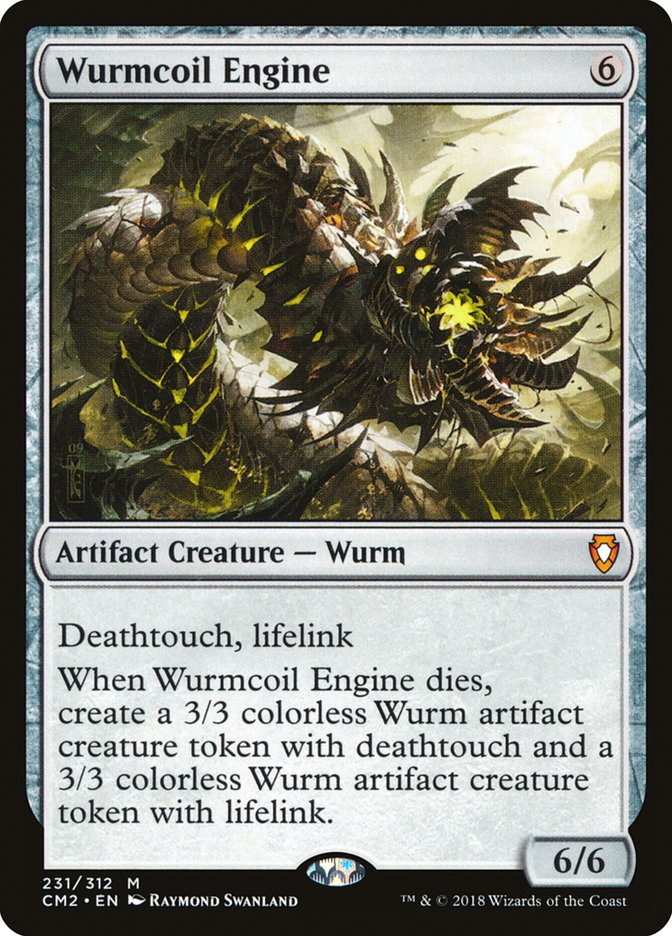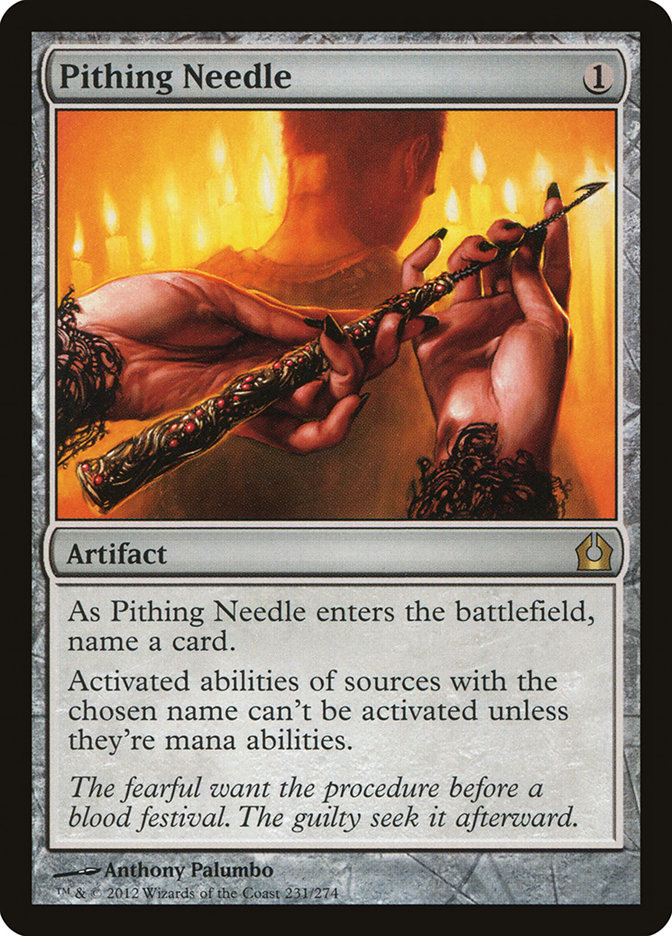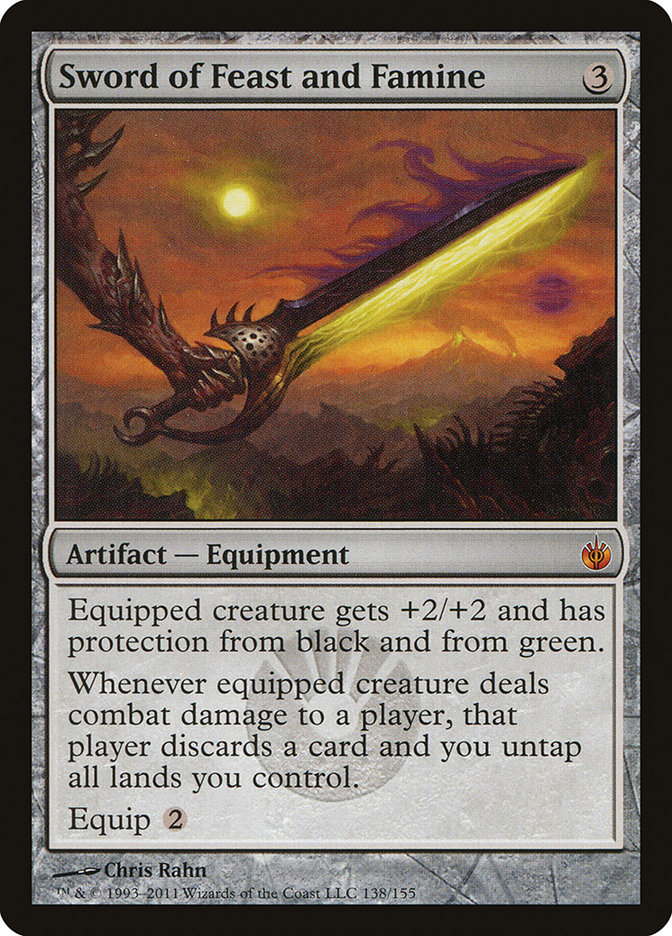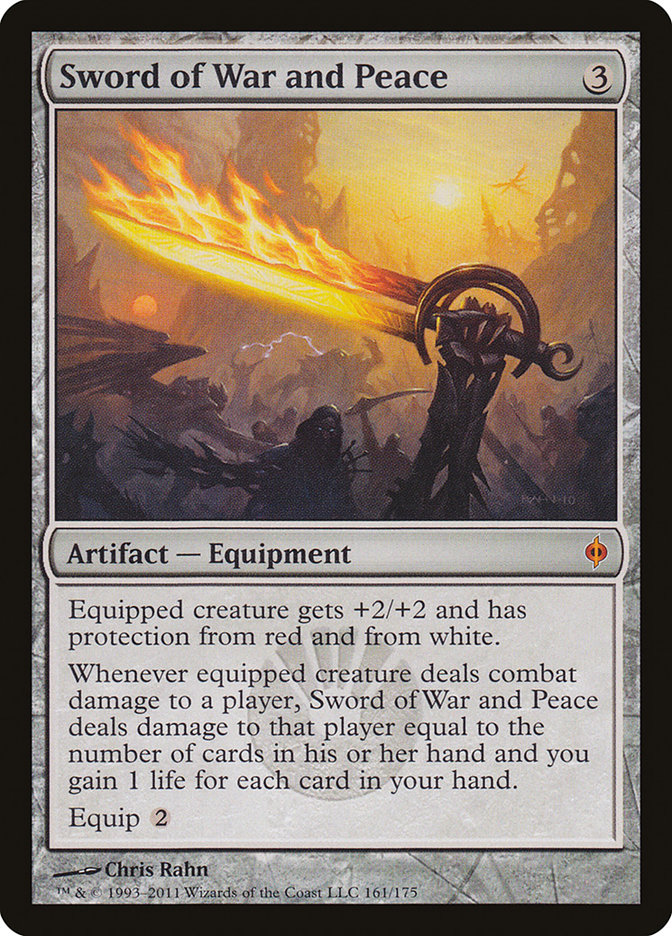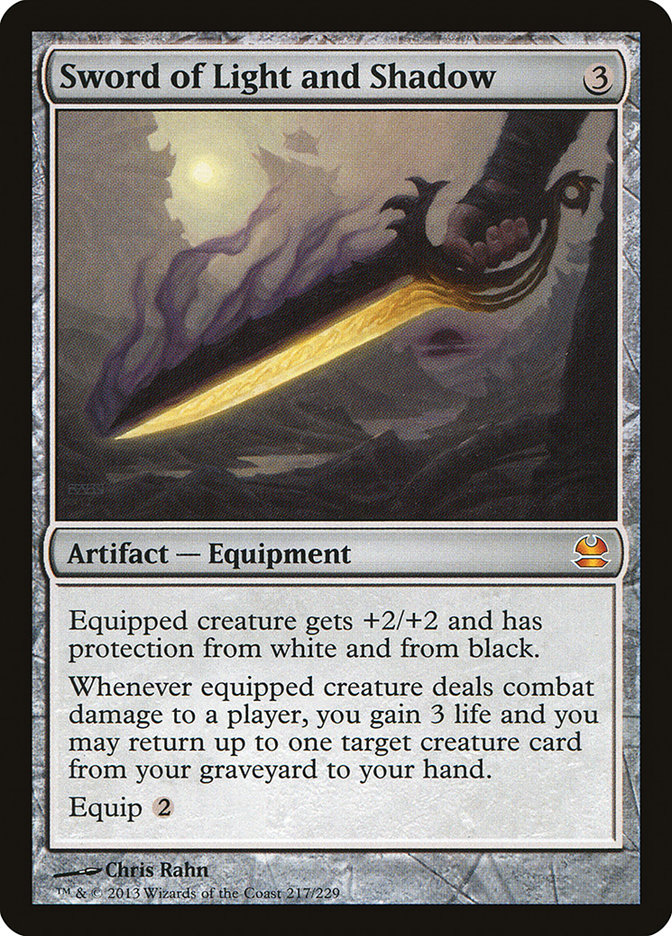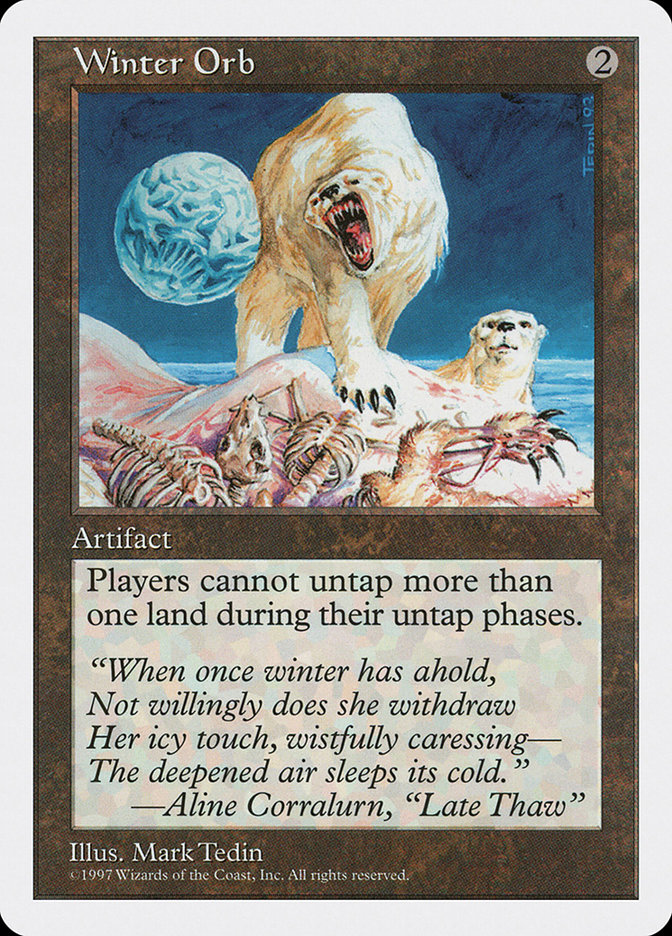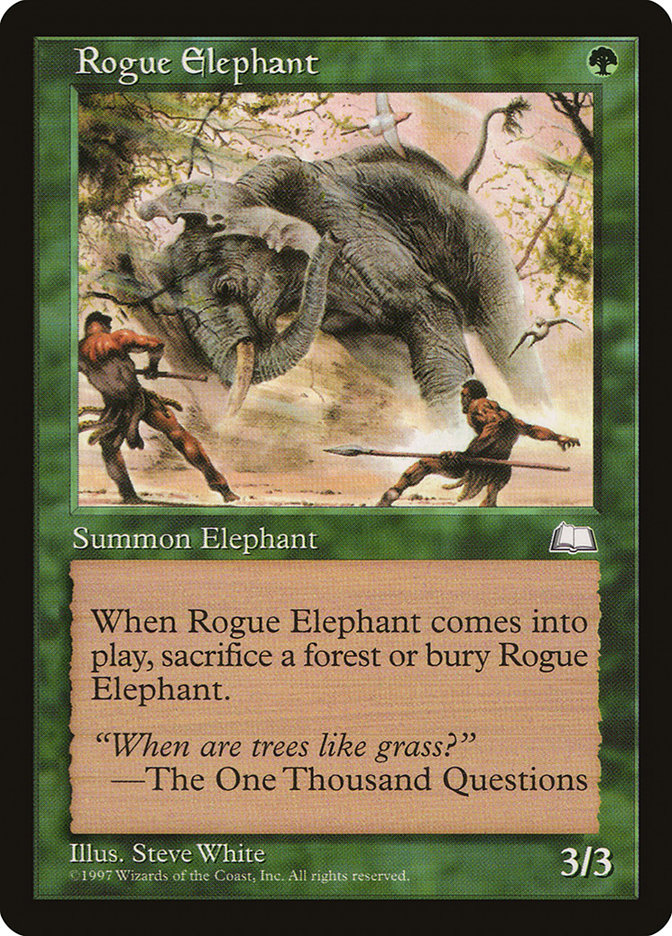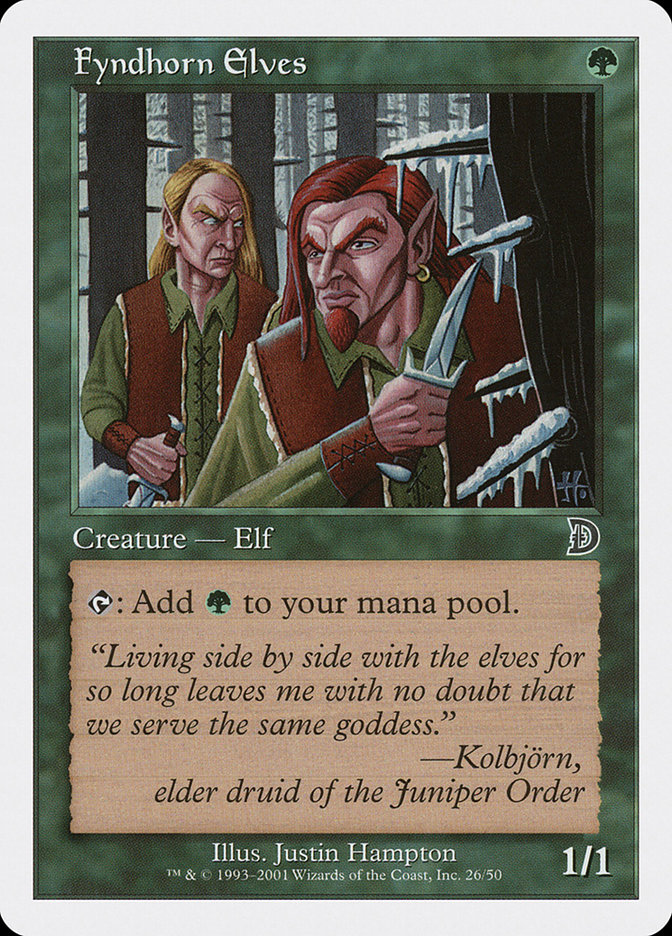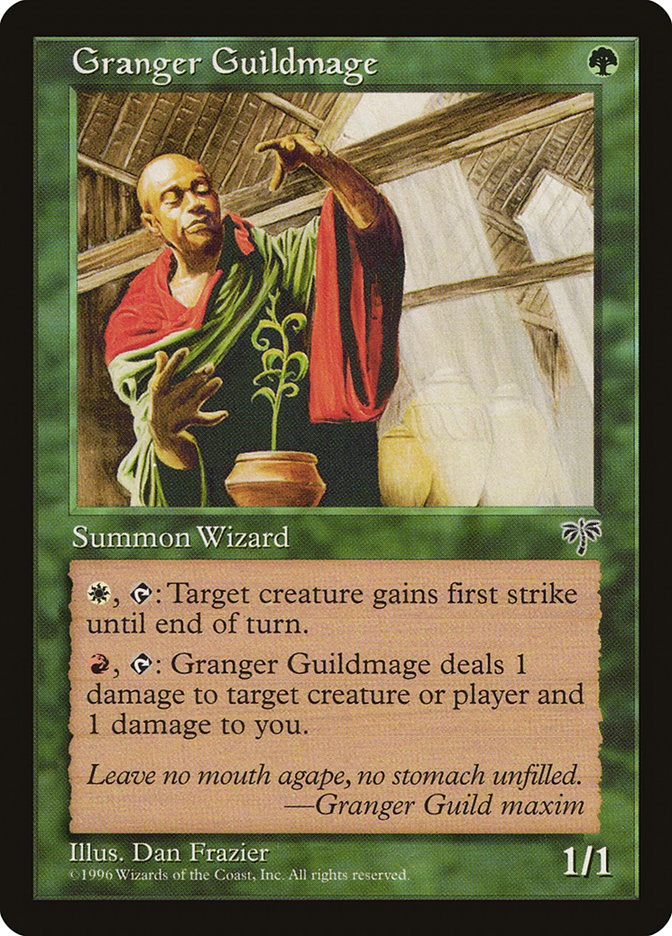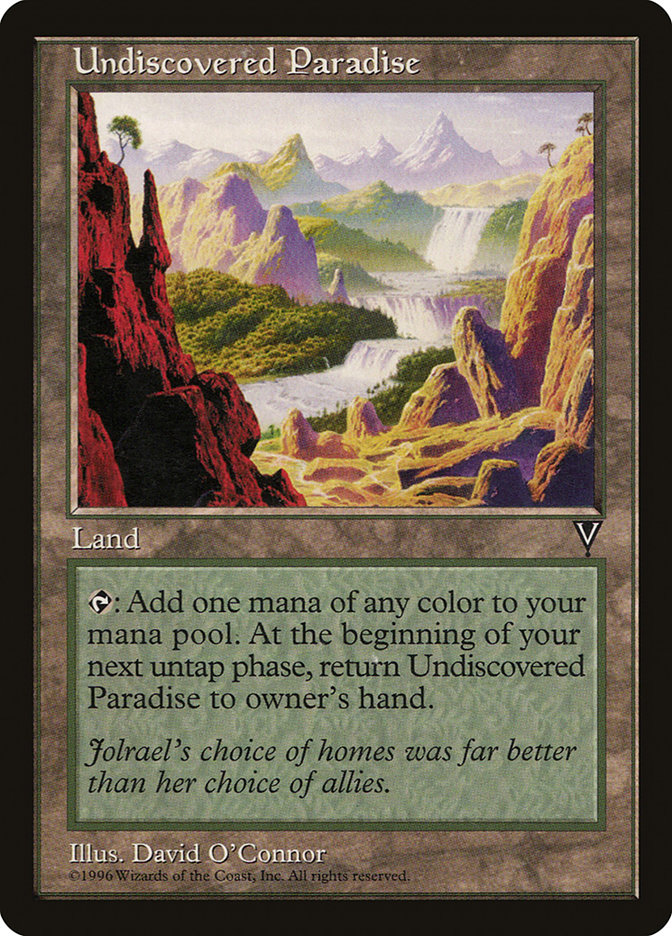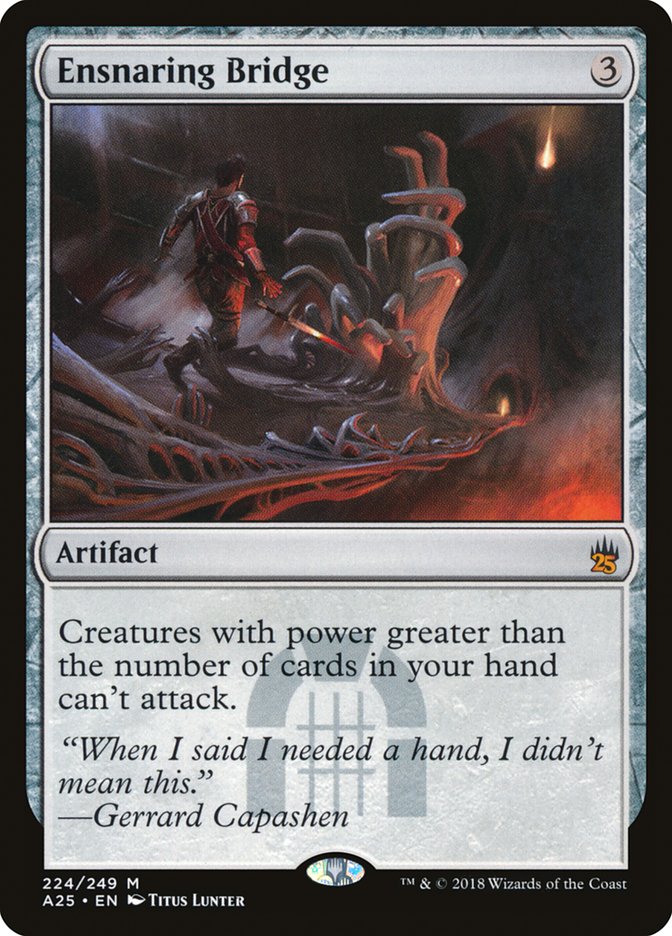Let’s kick things off with our top artifact creature of all-time:
15. Arcbound Ravager
Probably not a big surprise (you know, with Lodestone Golem, Masticore, and
Triskelion accounted for), Arcbound Ravager is the ultimate “on-board trick
nightmare.” If Triskelion’s zero activation cost made things complicated,
Arcbound Ravager adds a degree of complexity rivaled by few other
competitive cards in the game’s history.
While we’re on the topic, however, Walking Ballista and Hangarback Walker
both deserve an honorable mention. These two show some similarities to
Arcbound Ravager, including both being at a very uncommon power level for
an artifact creature.
All three of these two-cost five-star threats can be found in the Hardened
Scales decks of recent years:
Creatures (21)
- 4 Arcbound Ravager
- 4 Arcbound Worker
- 4 Steel Overseer
- 4 Hangarback Walker
- 4 Walking Ballista
- 1 Sparring Construct
Lands (20)
Spells (19)
- 3 Welding Jar
- 4 Ancient Stirrings
- 4 Mox Opal
- 2 Throne of Geth
- 1 Apostle's Blessing
- 4 Hardened Scales
- 1 Animation Module
Sideboard

Hardened Scales, Throne of Geth, Animation Module, and Steel Overseer all
have synergy with the +1/+1 counter “theme” implied by Arcbound Ravager,
Walking Ballista, and Hangarback Walker. While the two-drop creatures are
powerful on their own, they perform at an even higher level when they are
consistently getting extra +1/+1 counters with every activation or every
turn.
Arcbound Ravager may not go in as many different decks as Walking Ballista
and Hangarback Walker, but it’s basically always the best card in every
deck it’s in, and notably, these aren’t just Affinity decks.
That said, Arcbound Ravager will surely always be remembered best for its
central role in basically every Affinity deck since Darksteel.
These decks have taken many forms, with a wide range of supporting
characters. Aeo Paquette’s Worlds finalist list is one such example,
helping cement the need for the biggest wave of bans since the Combo Winter
or Urza block.
Creatures (22)
- 4 Arcbound Ravager
- 4 Arcbound Worker
- 2 Somber Hoverguard
- 4 Frogmite
- 4 Disciple of the Vault
- 4 Ornithopter
Lands (18)
Spells (20)
Sideboard

That’s right; in those days, Affinity decks had cards with the affinity for
artifacts mechanic!
The real stars of the show, however, were Arcbound Ravager, Disciple of the
Vault, and Cranial Plating.
Arguably, you could make a good case for Cranial Plating to appear on this
list, though the counterplay against it is much easier to come by than
Arcbound Ravager. That said, it sure does make everything hit absurdly fast
and hard.
14. Sensei’s Divining Top
Sensei’s Divining Top has always been a controversial artifact, but the
controversy used to be about whether it was a trap, tricking people into
wasting tons of mana, or if it was actually just efficient library
manipulation.
While Sensei’s Divining Top has plenty of “combos,” most of the time, the
real value of Sensei’s Divining Top comes from shuffle effects, giving you
fresh looks at the top of your deck.
While fetchlands may be the most notorious, plenty of successful Top decks
have gotten by on a lot less.
The late Gadiel Szleifer was one of the most naturally talented minds in
Magic history. His Pro Tour Philadelphia victory with Gifts Ungiven
provides the perfect example of the unassuming Sensei’s Divining Top deck.
Like Thawing Glaciers and Brainstorm, Sensei’s Divining Top would win game
after game, flying under the radar, letting Gifts Ungiven, Meloku the
Clouded Mirror, and Kokusho, the Evening Star get the credit.
Creatures (10)
- 4 Sakura-Tribe Elder
- 2 Ink-Eyes, Servant of Oni
- 1 Meloku the Clouded Mirror
- 2 Kokusho, the Evening Star
- 1 Hana Kami
Lands (24)
Spells (26)

I always appreciated the sideboards of the best Gifts players of that era.
With Cranial Extraction such an important player, the ability to sideboard
into a wide range of threats was crucial for not being overly reliant on
any one or two of them.
13. Sword of Fire and Ice
Full disclosure: Sword of Fire and Ice is not so much better than Sword of
Feast and Famine as to be this many spots higher. Frankly, Sword of Light
and Shadow, and Sword of War and Peace, are both reasonable candidates as
well. I’m just definitely going to sneak them all into this one spot, even
if I have to cover for Sword of Body and Mind, to do so.
Creatures (25)
- 4 Mother of Runes
- 4 Flickerwisp
- 4 Stoneforge Mystic
- 1 Mirran Crusader
- 4 Phyrexian Revoker
- 4 Thalia, Guardian of Thraben
- 2 Recruiter of the Guard
- 1 Sanctum Prelate
- 1 Palace Jailer
Lands (24)
Spells (11)

The printing of Stoneforge Mystic was definitely a game-changer for the
Swords (and equipment in general).
While Umezawa’s Jitte is absurd against creatures, Sword of Fire and Ice is
pretty absurd against a lot of non-creatures (and plenty of creatures, too,
for that matter).
Okay, admittedly, Batterskull makes a pretty good case to appear on this
list. What do you want from me?
While we’re on the topic, I just want to make sure I understand this
correctly: Triskelion is better than Wurmcoil Engine, right?
Get over yourself.
Pithing Needle definitely deserves an honorable mention. Simple, cheap,
clean, and efficient, Pithing Needle is a classic and brings with it a
shocking amount of depth. What a great card, being so high impact for one
mana, while also having tons of counterplay and so much ability to limit
linear strategies while also being a part of big turns and big swings, one
way or the other.
While Sword of Feast and Famine is most often thought of in Caw-Blade
decks, Paul Rietzl’s finalist deck from that same Pro Tour Paris has one
major advantage Ben Stark’s Caw-Blade does not…
Creatures (24)
- 4 Goblin Guide
- 4 Plated Geopede
- 4 Steppe Lynx
- 3 Stoneforge Mystic
- 4 Squadron Hawk
- 1 Spikeshot Elder
- 2 Mirran Crusader
- 2 Hero of Oxid Ridge
Planeswalkers (1)
Lands (26)
Spells (9)

Rietzl’s list also featured Sword of Body and Mind!
Okay, Sword of Body and Mind isn’t quite as good, but as somebody who had a
Jace, the Mind Sculptor that couldn’t bounce his threat equipped with a
Sword of Body and Mind, thanks to protection from blue, let me just tell
you: it’s still a beating.
Creatures (9)
Planeswalkers (5)
Lands (26)
Spells (20)
- 4 Mana Leak
- 1 Divine Offering
- 2 Into the Roil
- 3 Spell Pierce
- 4 Preordain
- 1 Sword of Feast and Famine
- 1 Batterskull
- 1 Sword of War and Peace
- 3 Dismember
Sideboard

While Caw-Blade began as merely one of the most successful breakout
strategies of all-time, it wasn’t until New Phyrexia that “Full-On
Caw-Blade” ascended to the heights of most sustained dominance in history.
Sword of War and Peace hits like a truck, to be sure, but when the format
is basically entirely Caw-Blade and extremely anti-Caw-Blade decks (like
the Temur decks of the time), the combination of protection from white and
protection from red is a winning one.
Creatures (26)
- 3 Arcbound Ravager
- 4 Ornithopter
- 3 Master of Etherium
- 4 Steel Overseer
- 4 Memnite
- 4 Signal Pest
- 4 Vault Skirge
Lands (16)
Spells (18)

Last, but not least (seriously, least was definitely Sword of Body and
Mind, not close), we have Sword of Light and Shadow.
While most commonly appearing in green decks as a way to buff stray
Llanowar Elves into legit threats while also protecting key threats from
spot removal and grinding out card advantage if the game stretches, Sword
of Light and Shadow has also occasionally appeared in other decks, almost
always heavily capitalizing on the two extremely useful protection from
colors.
12. Winter Orb
Winter Orb is such a crazy powerful card, and it was such a defining
influence of the game’s first several years, it’s kind of wild to think
about just how few players today have ever played with or against it.
Winter Orb radically changes the relative value between mana and cards,
which leads to lots of interesting decisions, deckbuilding, and gameplay,
but also to an absurd amount of waiting around and doing nothing…
…for a very long time.
It also heavily punished anyone foolish enough to play with sweet expensive
cards, rather than cheap ones, to such a degree as to be extremely out of
line with today’s design sensibilities. Finally, while it did put some
interesting constraints on players and strategies, it would limit options
so tightly as to lead to formats it was in to sometimes become so heavily
about it as to cheapen most of the other dynamics you could possibly
explore.
While Winter Orb is often thought of as a part of prison strategies, it was
actually even a more natural fit for cheap green creature decks.
Creatures (32)
- 2 Whirling Dervish
- 4 Quirion Ranger
- 2 Uktabi Orangutan
- 4 Fyndhorn Elves
- 4 Spectral Bears
- 3 Lhurgoyf
- 4 Ghazban Ogre
- 2 Jolrael's Centaur
- 4 Rogue Elephant
- 3 Harvest Wurm
Lands (18)
Spells (10)
Sideboard

With Winter Orb on the battlefield, sacrificing a land to Rogue Elephant
was just not that big of a deal. Besides, Fyndhorn Elves and Quirion Ranger
really help get around the mana restrictions set down by Winter Orb.
Some deck designers pushed the Winter Orb + Quirion Ranger experience even
harder, such as Cathy Nicoloff and friends (Matt Place, Dan Burdick, etc.)
revolutionizing Standard manabases with their Five-Color Green deck, using
Quirion Ranger to untap Birds of Paradise and Granger Guildmage, and with
Undiscovered Paradise for extra land-bouncing anti-Winter Orb action.
Nowadays, we’ve seen so many decks splash lots of colors off five-color
lands, it doesn’t rock our world, but you gotta remember, that started
somewhere. When these players rolled out this crazy new conceptualization
of what a manabase could be, it was unlike anything people had ever seen
before, and the game has never been the same since.
Creatures (26)
- 4 Birds of Paradise
- 4 Whirling Dervish
- 4 Quirion Ranger
- 4 River Boa
- 3 Maro
- 1 Karoo Meerkat
- 2 Jolrael's Centaur
- 4 Granger Guildmage
Lands (16)
Spells (18)
Sideboard
- 2 Terror
- 2 Gloom
- 1 Disenchant
- 4 Pyroblast
- 4 Hydroblast
- 2 Simoon

Is it a mono-green deck? Is it a five-color deck? Just the very envisioning
of your two-colors being “green” and “rainbow” was such a paradigm shift.
11. Ensnaring Bridge
What if Moat hit fliers, was cheaper, and was an artifact, so everyone
could play it?
Ensnaring Bridge, like Blood Moon, is a weird holdover in Modern from an
earlier era, a time with less reasonable approaches to locking people out
from ever being able to play the game.
While it has appeared in plenty of decks over the years (sometimes in the
maindeck, sometimes in the sideboard), such as Tezzeret, Mono-Red, and
more, the most memorable and successful Ensnaring Bridge showing in recent
memory was definitely Luis Salvatto’s Pro Tour victory with his Ensnaring
Bridge-fueled Lantern of Insight + Codex Shredder/Pyxis of Pandemonium
deck.
Lands (18)
Spells (42)

With Ensnaring Bridge capable of stopping 95% of attacks, the ability of
Lantern of Insight to ensure opponents never draw what they need to get out
of it can be a game-winning strategy once you get it all going. While
Lantern of Insight is definitely needed for the “lock,” this strategy would
not be even remotely viable if not for Ensnaring Bridge providing such a
sweeping and powerful mechanism for stopping all creature attacks.
Okay, we’re starting to get down to the nitty gritty. Join me back here
tomorrow, as we break into the top ten artifacts of all-time…
Since apparently, there are these Moxes to discuss tomorrow?!?!


